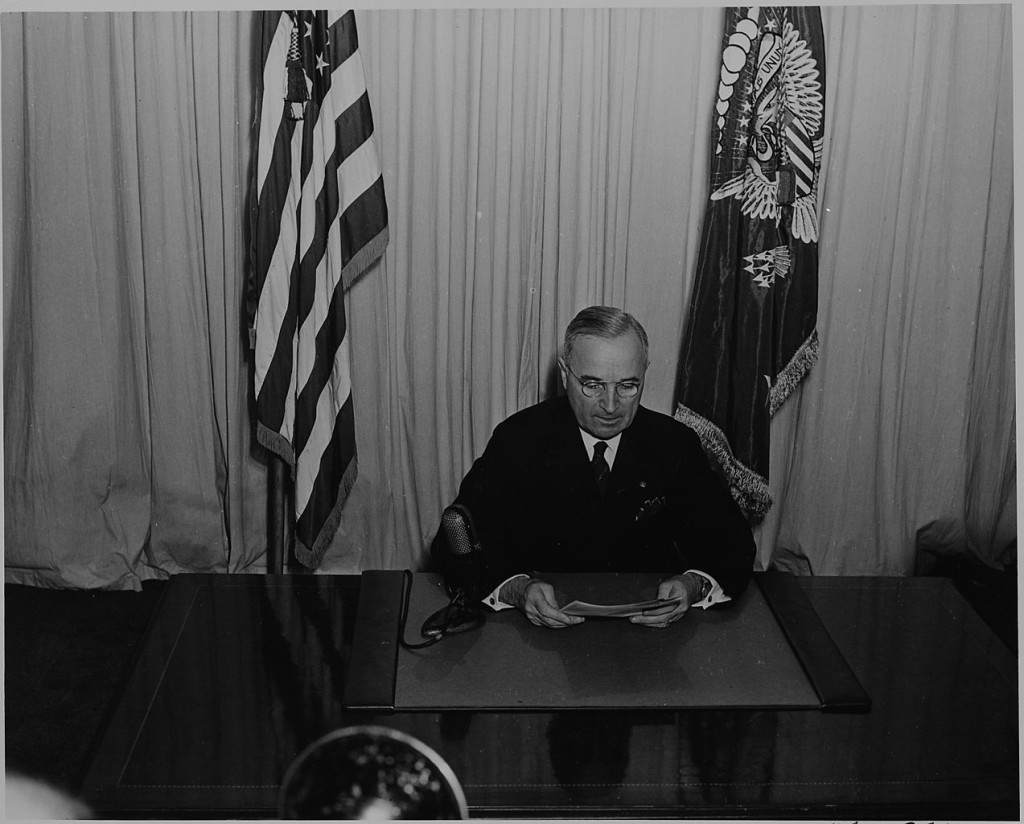(W)Archives: A Penny for Your Doctrine

After years of debating the existence or nonexistence of an “Obama Doctrine,” we finally appear ready to move on to discussing the doctrines of potential 2016 presidential candidates. So perhaps it would be a good moment to review the sorry record of presidential foreign policy doctrines over the last half-century, and ask why we nonetheless seem to remain so desperate for new ones.
The Eisenhower Doctrine was first clearly articulated in a speech after the 1956 Suez Crisis (text available through the UC Santa Barbara’s American Presidency Project) It failed to stop the spread of Soviet influence or pro-Nasser movements in the Middle East. Western intervention propped up sympathetic governments in Lebanon and Jordan, but the Eisenhower Doctrine saw more dramatic setbacks with formation of the United Arab Republic and the Iraqi coup in 1958.
Then, the Nixon Doctrine failed to make the United States’ then-regional ally Iran a pillar of stability in the Middle East, and the Carter Doctrine failed to prevent the Persian Gulf from coming under the influence of a hostile power, namely Iran.
The Reagan Doctrine, supporting “those who are risking their lives—on every continent, from Afghanistan to Nicaragua—to defy Soviet-supported aggression,” became, in its signature application, the Iran-Contra scandal. Reagan’s support for the Afghan mujahidin proved more successful in the short term, of course, but had actually been started by Carter.
And actually, even the Truman doctrine (brought to us by the History Channel), which succeeded admirably in preventing a communist takeover of Greece or Turkey, didn’t prevent Truman from being pilloried by opponents when it failed to somehow prevent a communist takeover of China.
It has become commonplace now to talk about how much simpler everything was during the Cold War. But the failure of all these doctrines remind us that in any given region, like the Middle East, things were plenty complicated back then too. So complicated, in fact, that even our most successful foreign policy presidents regularly made a mess of their most prominent initiatives. The fact that we won the Cold War in spite of these missteps, though, might be what gives the idea of the presidential doctrine its enduring popularity.
Truman and Reagan, for example, had doctrines that, whatever their stated aim, now seem manifestations of their resolve to win the Cold War. If what we mean by doctrine is not a literal doctrine, of the sort that so often failed, but rather some intangible, easily quotable combination of vision and signature style, then the Truman/Reagan doctrine—win the Cold War—looks pretty good. It also helps that both presidents’ signature style can be boiled down to some version of “muscular idealism.” Indeed, JFK had so much muscular idealism that no one even thought to ask if he had a doctrine. Being Kennedy was doctrine enough.
Now, as the 2016 presidential race begins to shape up, Hillary Clinton has already begun to distance herself from Obama’s pragmatism in an effort to articulate a more muscular and idealistic foreign policy vision of her own. But as we continue to expect that our presidents be Forcefully Friendly, or perhaps Tactfully Tough, as we insist they declare their support for Robust Internationalism, or Multilateral Machismo, let’s take a lesson from the failures of Ike and Nixon and Carter and remember that the devil is always in the details.
Nick Danforth is a doctoral candidate in Turkish history at Georgetown University. He writes about Middle Eastern history, politics, and maps at midafternoonmap.com.

